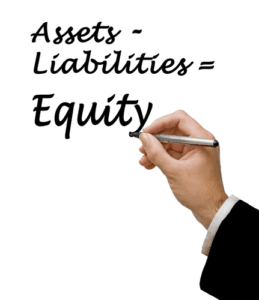
Such advancements structurally improve traceability, accountability, and uniformity https://www.bookstime.com/ – enabling more consistent CIP accounting.

How do you show construction in progress on a balance sheet?
The costs of WIP inventory are only recognized as expenses on the income statement when the related goods are completed and sold. By understanding the concept of CIP and its implications, businesses can effectively manage long-term projects, optimize resource allocation, and enhance their financial reporting practices. As the construction progresses, the company updates the CIP account with additional costs. Once the new facility is completed and put into operation, the costs Accounting Periods and Methods recorded as CIP are transferred to the “Property, Plant, and Equipment” account.
- Best practice involves creating new subtasks and cost codes to track change order expenses separately from original budget items.
- Because the expansion is complete and in service, the equipment in this example will begin depreciating as other fixed asset accounts do.
- At that point, the costs are transferred to the “Warehouse” fixed asset account.
- Take the next step in streamlining your project cost management—start your free trial with Planyard today or schedule a demo to experience the difference in real-time financial control.
- Accurate financial reporting is of utmost importance in the construction industry.
The Essentials of Construction Financial Management
The completed contract method does not rely on progress estimates and is easier to apply. However, no financial information is available until contract completion, posing challenges for interim performance management. Take the next step in streamlining your project cost management—start your free trial with Planyard today or schedule a demo to experience the difference in real-time financial control. Build to use can be an extension in an existing office facility, building a new plant, warehouse, or any business asset. One thing to understand is that only capital costs related to an asset under construction are to be kept in the CIP account.
Learn More About Tax Accountant Jobs

This depreciation expense will then reduce future profits, creating a need for strategic planning to manage the long-term financial implications. It involves capturing all expenditures related to materials, labor, equipment, contractors, and other elements required for constructing the asset. Accurate financial reporting is of utmost importance in the construction industry. It plays a critical role in ensuring financial transparency and enabling construction companies to make informed business decisions. By providing precise and reliable financial data, accurate financial reports facilitate effective construction financial management and contribute to the overall success of construction projects. CIP represents ongoing construction projects, whereas fixed assets are completed projects that are ready for use.

Understanding Construction Project Financial Lifecycle And Contracts
Upon completion, the aggregated costs either capitalize into production assets like buildings or transfer to client asset accounts in case of construction management contracts. Construction accounting is not just tracking accounts payable, receivable, and payroll. Unlike other businesses, construction companies have to manage other anomalies like job costing, retention, progress billings, change orders, and customer deposits. These extras make CIP or construction in progress accounting relatively more complicated than regular business accounting. CIP accounting in construction presents unique challenges, but effective strategies can ensure accurate financial reporting. When the project is complete, transfer the CIP balance to a fixed asset account like “Buildings.” This signifies the asset’s transition to operational use, cip accounting and depreciation begins.
All the costs of assets under construction are recorded in the ‘Construction In Progress Ledger Account.’ They are shifted to the asset side of the balance sheet from the ledger. Construction in progress, or most commonly known as CIP, is a fixed asset account with a natural debit balance. Depreciation is calculated using several methods, including straight-line, accelerated, and units of production. Straight-line depreciation is the most commonly used method in construction in progress accounting. It involves dividing the asset’s cost by its useful life and allocating an equal amount of the cost to each accounting period over the asset’s life. Work in progress (WIP) is accounted for as part of the inventory asset account on the balance sheet.


Business A utilizes $2,000 worth of materials from its inventory for the expansion. Business A receives a $100,000 bill from Builder’s Warehouse for construction materials. Company ABC would now start to depreciate the equipment since the project finished. 1) On March 11, 2021, Business A received a $100,000 bill from Builder’s Warehouse for construction materials.
Factors Impacting Accounting Method Selection
For example, costs related to the design and planning of a project may be capitalized early on, while costs related to construction activities may be capitalized later as the project progresses. Sophisticated construction accounting software integrated with project scheduling and costing tools can prove pivotal in navigating CIP complexities. At such times, it is better to switch to more advanced software and accounting methods like construction in progress accounting to ensure your business doesn’t lose its grip on finances. When construction on the project completes, and the asset is placed in service, the CIP account is shifted to related fixed-asset accounts. A CFO, or Chief Financial Officer, is a senior executive responsible for managing the financial actions of a company.

